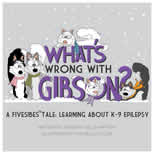Lead Poisoning and Seizures
Written by: WB Thomas DVM, Dipl.ACVIM(Neurology)
Poisoning with many substances can cause a sudden onset of seizures. In most cases, the seizures stop when the patient recovers from the poisoning. Thus, poisoning is not usually a major diagnostic consideration in dogs with chronic, recurrent seizures. However, lead poisoning (plumbism) is an exception because many dogs with this disorder are being exposed to lead on a continual basis, resulting in long term signs. In some geographic regions, lead poisoning is an important diagnostic consideration in any dog with seizures.
Although any age dog can be affected, young dogs are predisposed. In most cases of lead poisoning in dogs, the owners are not aware the dog was being exposed to lead. The most common source is tiny particles or dust from degenerating paint. In the US, the amount of lead in household paint was reduced in 1950 and further reduced in 1978, but many older homes still contain lead-based paint. Other sources include linoleum, plumbing solder, caulking, drapery weights, fishing sinkers, golf balls, and many others.
Common signs include vomiting, poor appetite, diarrhea, lethargy, and abnormal behavior such as hysteria. Seizures are seen in about 40% of affected dogs and may be the only sign. Definitive diagnosis is based measuring the amount of lead in tissue, usually blood (blood lead level).
Several drugs are used to treat lead poisoning, including calcium disodium edetate (CaEDTA), penicillamine, and Succimer (DMSA). These drugs act as lead chelators, forming water-soluble chelates with lead, which increases the excretion of lead in the urine. Several course of treatment may be necessary, depending on results of blood lead levels.
Surgery may be necessary to remove any swallowed lead objects. It is also important to identify and remove the source of lead exposure. This is especially important because people, especially children, may be exposed to the same sources as the affected dog.
Although severe cases can be fatal, treatment is usually successful.
WB Thomas DVM
Dipl.ACVIM(Neurology)
University of Tennessee
Knoxville, TN
References
Morgan RV, et al. Clinical
and laboratory findings in small companion animals with lead poisoning:
347 cases
(1977-1986). Journal of the American Veterinary Medical Association
199:93-97,1991.
Morgan RV , et al. Demographic
data and treatment of small companion animals with lead poisoning:
347 cases
(1977-1986). Journal of the American Veterinary Medical Association
199:998-102,1991.
Page last update: 12/13/2011










